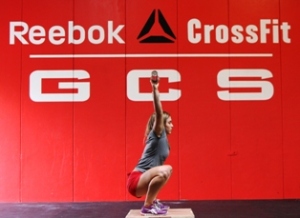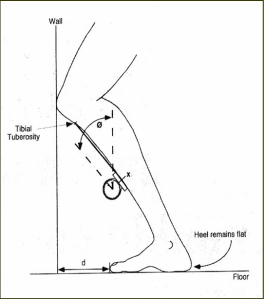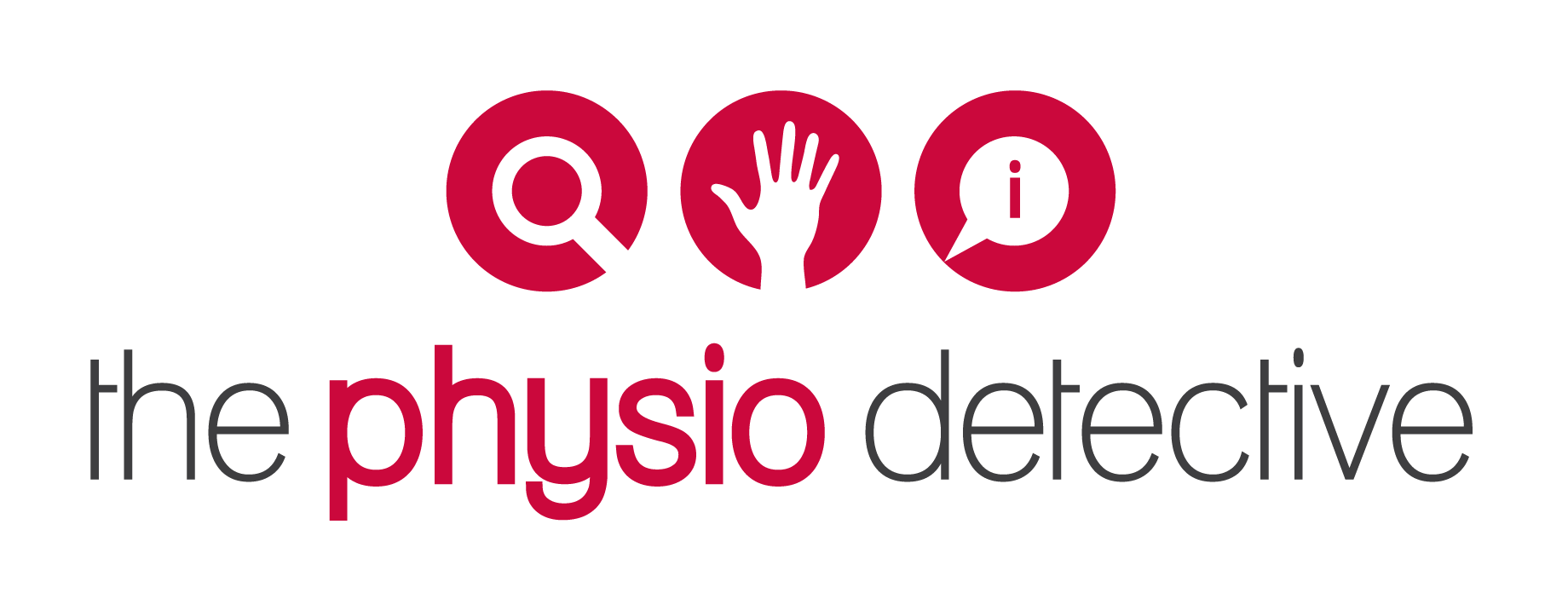5 Tips On How To Improve Your Overhead Squats
 Overhead squats (OHS) are a difficult movement. They seem so simple - simply keep your arms and weight above your head while you squat...but they challenge the motor control systems of the body in the best possible way...which is why I love them as an assessment and as a movement.
Overhead squats (OHS) are a difficult movement. They seem so simple - simply keep your arms and weight above your head while you squat...but they challenge the motor control systems of the body in the best possible way...which is why I love them as an assessment and as a movement.
They may or may not appear in the CrossFit Open as they haven't been in since 2011 - they are a challenging movement for people to complete...they usually show up at Regionals and The Games.
Some key points about the Overhead Squat that will help you
- Your anterior and posterior muscles of the arm, thorax and abdomen need to be stabilizing and lengthened while your anterior and posterior muscles of the legs need to be strong and moving your body weight.
- This means that you have to dissociate your trunk (thorax, back and pelvis) from your hips
- You also have to dissociate your shoulders from your trunk so they can keep the weight over your feet as your trunk moves in space.
- To do that, you need the shoulder flexibility to be good...but that is usually the last problem to show itself...
 Look at your ankle flexibility for an improved OHS
Look at your ankle flexibility for an improved OHS
- You need at least 10-12cm in the Lunge Test for a good squat
- That means your big toe is 10-12cm from the wall when your knee is touching the wall.
- Ideally, you should be squat and lined up without twisting when doing this test
- The heel has to stay on the floor - no lifting it up!!
- Hip flexibility is the next culprit
- Reduced hip range of motion results in athletes who bend forwards in the back
- This can often feel like you don't have enough shoulder flexibility but it is rarely the problem
- You need flexible hips and ankles to keep upright in a nice OHS
- Back strength is required
- If you lack the back strength to keep upright, your bar will inevitably travel forwards
- Your "Posterior Chain" muscles in the back and arms must work hard but they can't lock down too tightly or you won't move in your hips, knees and ankles. Learning how to do that is called "motor control"
- Wrists - an underrated player
- I have seen VERY strong athletes struggle with OHS because of any of the 5 elements I have listed here.
- Wrists have to be flexible yet stable enough to cope with a position of radial deviation during this movement.
- If you have a large load on the bar, this can mean your wrists fail before your shoulders, back or legs do
- Learn to care for your wrists by mobilizing them, improving their flexibility and stability in many different positions.
__________________________
6 Tips Common to All Movements
Basically similar to my blog on preparing for the Open...
1. Practice your technique NOW
- Feel comfortable in practice with competition technique and Range of Motion (ROM) and it will feel comfortable in competition.
- Good technique is the most efficient way to complete the reps. For most movements, keep your back straight for crying out aloud!!
- Motor patterns are strengthened with perfect practice - the more reps you do perfectly, the more likely you will do them
2. Continue your strengthening program (or start NOW!)
- There are still 7 weeks before the Open starts and 11 weeks until it ends - there is time to make gains!
- If you just get one more rep out because you are just a little bit stronger or you get a PB because you improved enough to achieve it, there is no better feeling in the Open. Last year, I got a 135lbs snatch 4 times - I got my first the day before I did 13.1. I also got my first CTB pullup during the Open. Strength helps!
- If you are a Regionals athlete, the Open should just be a speed bump in your training program.
- I have never heard anyone say "If I was only a bit weaker for that workout, I would have done better"!
3. Get your Coach to help identify and rectify your weaknesses
- Most coaches are happy to tell you what to work on and will give you accessory (additional) exercises to do after your workouts.
- Most coaches will have some form of one-on-one coaching sessions they can do with you - these are worth it for beginners and experienced athletes alike
- If you do ask your coach for help and you DO NOT do what they say, then please DO NOT ask them for more help until you have done what they told you to do already!! Nothing is more frustrating to a coach than someone who asks for help but then doesn't do it.
- If you have done everything you are told to do and your coach doesn't want to help you, ask yourself if you are in the right box or asking the right person...this should be extremely rare...in general and basically every box I have been to (over 20) and coaches I know (well over 50) have had coaches that are willing to help the athletes and care about their safety.
4. Sort your niggles out
- One of the most common comments I hear is "If I had known how much better I would feel, I would have come sooner"
- 'Nuff said!
5. Don't push to failure
- Rich Froning rarely fails a rep. Don't waste your energy on failed reps. Rest and just concentrate on making good reps. Pushing to failure is a waste of time and energy and significantly increases your risk of injury...
6. Lose the "sins of Christmas" - get that body fat% down!
- This one is for my friend John Z - all the bodyweight movements in the Open will get better if you are carrying less fat.

Great article but you only gave 1 mobility drill (regarding ankle flexibility). What other drills would you suggest for lower back that round at the bottom. AKA the ‘buttwink’. We’ve practice with opening up the hip banded lateral distractions and couch stretches (to keep the psoas from caving backward to allow more room in deep hip flexion). What do you suggest or are these drills enough?Stay Fit,Joshua JarminOwnerThe BAR FitnessOffice: 678-264-8025Cell:404-558-6477http://www.thebarfitnessga.comjosh@thebarfitnessga.comFacebook Twitter
Hi josh. Those are good stretches and drills but I don’t think psoas affects ohs because you are in hip flexion already.
It is stability of the back that I train with mobility/flexibility of the hips.
I teach people to actually stop when their hips (or whatever) stop them and work in those positions – pause squats etc.
It is a neurological solution so results can come fast 🙂
Assess the movement and look for the region that moves first in a way you don’t like. Then fix the problems you find there – if short and tight, lengthen and stretch (or stabilize somewhere else!), if weak, then stabilize and strengthen.
I don’t like giving many drills because people focus on them and not the true problem and then they accumulate an hours worth of accessories and never do any of them. So I give about 5-15min of drills and change them up
Hope that helps. I will always endeavor to answer any questions that are raised 🙂
Pingback : 5 Tips on Preparing for the 2014 CrossFit Open | The Physio Detective
Pingback : 5 Tips To Improve Your Snatch For the CrossFit Open | The Physio Detective
Pingback : Thursday 1/23/14 - 5 Tips to Improve Your Overhead Squat
Pingback : THURSDAY 1.23.14
Pingback : Wall Ball Shots – A Definitive Guide – 11 Tips On How To Improve Your Wallball Shots | The Physio Detective
Pingback : » Wed 1/29 CrossFit Addiction Kennesaw
Pingback : CrossFit Open WOD 14.2 – Tips To Help You | The Physio Detective
Great article. I loved “Rich Froning rarely fails a rep. Don’t waste your energy on failed reps. Rest and just concentrate on making good reps.” Great thought. The Open crushed me on the OH Squats, so this is something that I’m working on at the moment. Will definitely pay attention to these points.
Thanks Stephan. Keep at it. Thanks for the kind words. I will be posting about ohs again with pics and video very soon 🙂
Pingback : CrossFit Games Open 15.2 Tips and Advice. | The Physio Detective